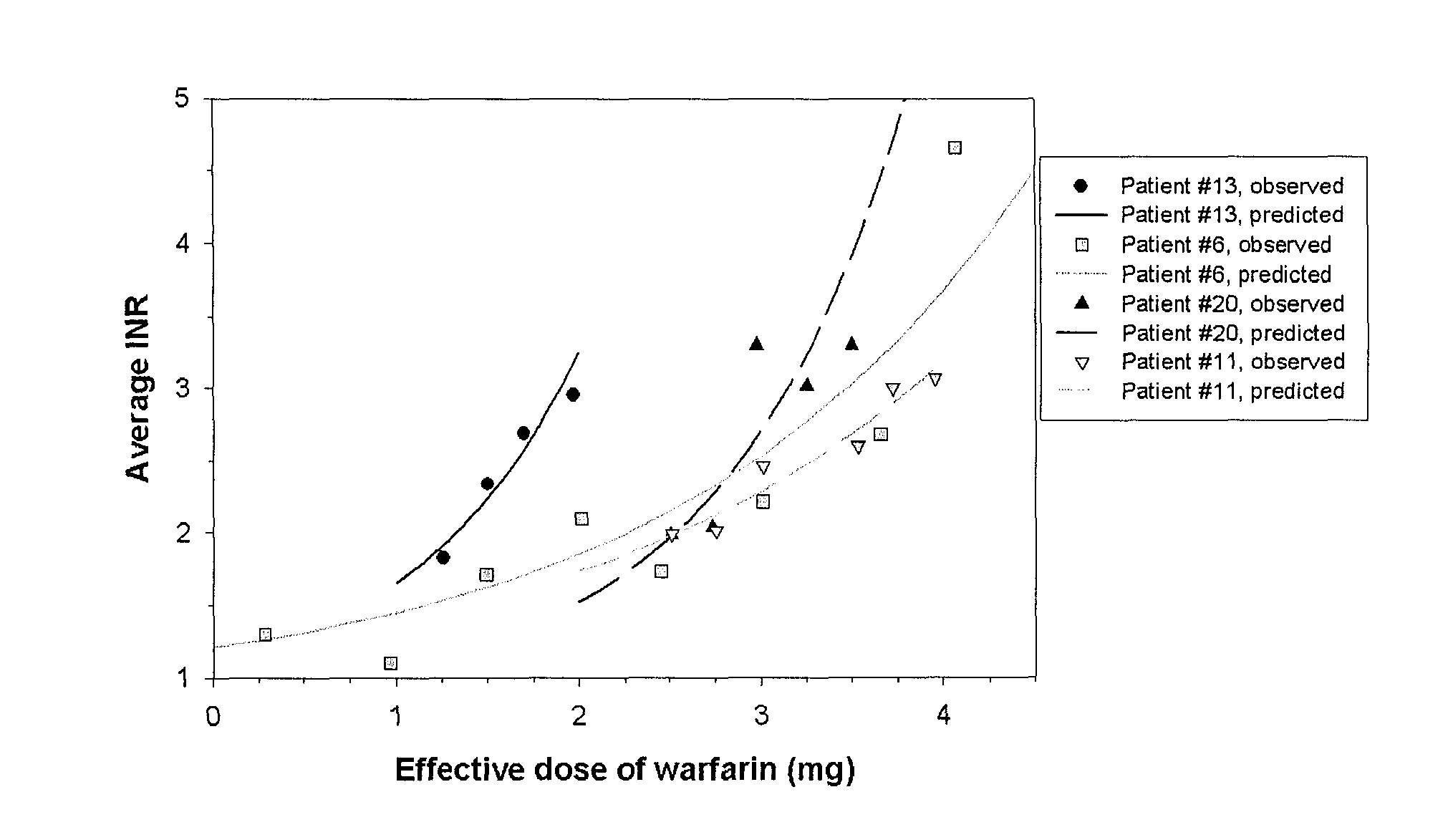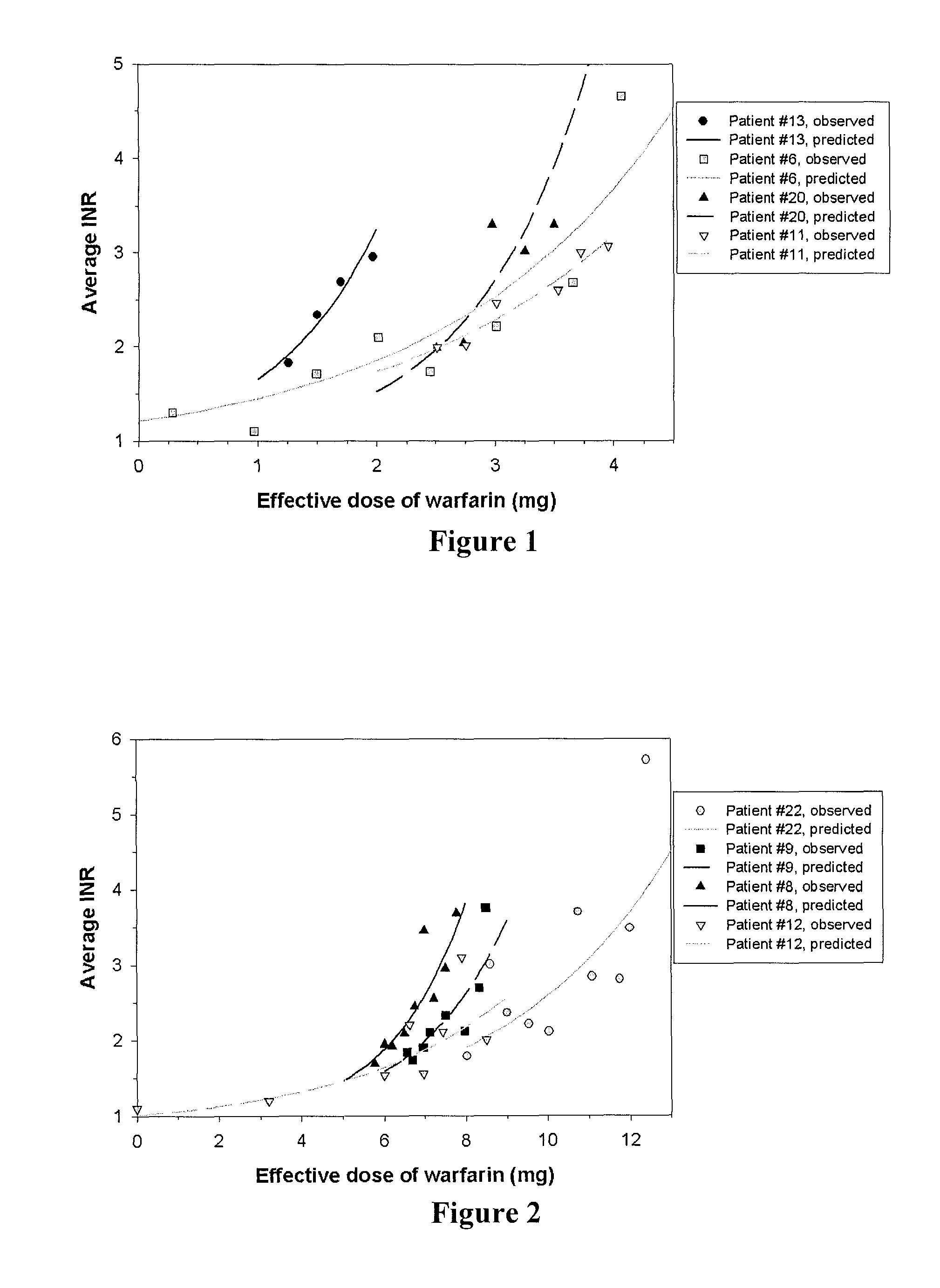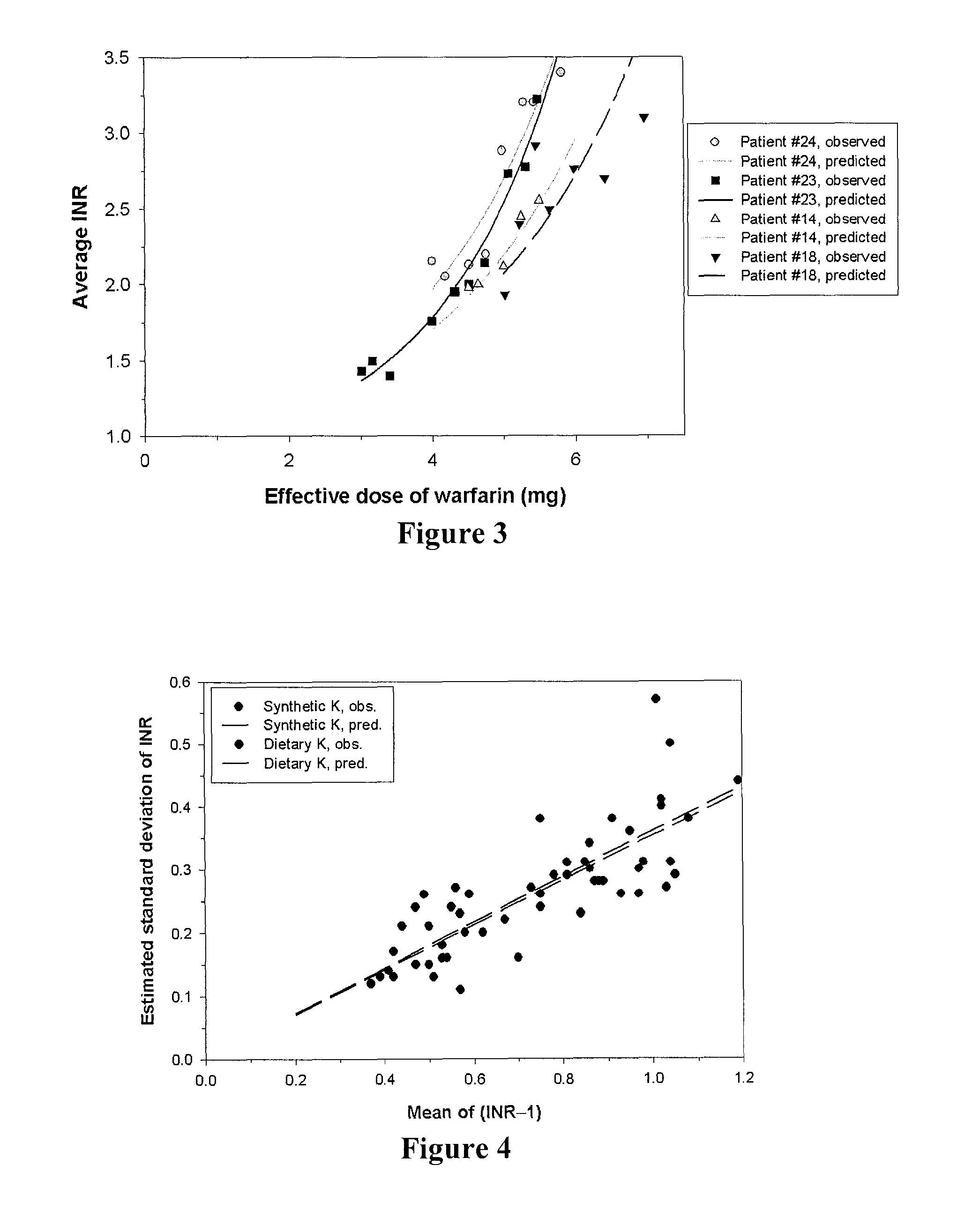Methods And Systems For Improved Pharmaceutical Intervention In Coagulation Control
a technology of coagulation control and pharmaceutical intervention, applied in the direction of instruments, extracellular fluid disorder, drug compositions, etc., can solve the problems of short-lived clotting factor, excessive anti-coagulation, and poor time-course of inhibition, so as to improve the effect of coagulation control and speed up the response, stabilize the response, and stabilize the
- Summary
- Abstract
- Description
- Claims
- Application Information
AI Technical Summary
Benefits of technology
Problems solved by technology
Method used
Image
Examples
Embodiment Construction
[0039]The inventors have now discovered a significantly improved and quantifiable dose-response relationship for Vitamin K antagonists for use in coagulation control, which allows to establish a more constant dosage of required medication and to develop / take into account patient-specific sensitivity to warfarin and Vitamin K. Contrary to established assumptions and calculations, the inventors discovered that the most accurate dependent variable is logit (1 / INR)=−log (INR−1).
[0040]It should be appreciated that the use of the logit form of the dependent variable has heretofore not been recognized. On the contrary, previous calculations have used the log of the ratio of (INR(predicted)−1) to INR (measured)−1) as a minimization criteria in the algorithm since it was assumed that INR by definition would be the ratio between two quantities and would have a theoretical lower bound of 1. Such assumption failed to use this construction as the dependent variable in the algorithm and failed to...
PUM
| Property | Measurement | Unit |
|---|---|---|
| half-stabilization time | aaaaa | aaaaa |
| Prothrombin time | aaaaa | aaaaa |
Abstract
Description
Claims
Application Information
 Login to View More
Login to View More - R&D
- Intellectual Property
- Life Sciences
- Materials
- Tech Scout
- Unparalleled Data Quality
- Higher Quality Content
- 60% Fewer Hallucinations
Browse by: Latest US Patents, China's latest patents, Technical Efficacy Thesaurus, Application Domain, Technology Topic, Popular Technical Reports.
© 2025 PatSnap. All rights reserved.Legal|Privacy policy|Modern Slavery Act Transparency Statement|Sitemap|About US| Contact US: help@patsnap.com



